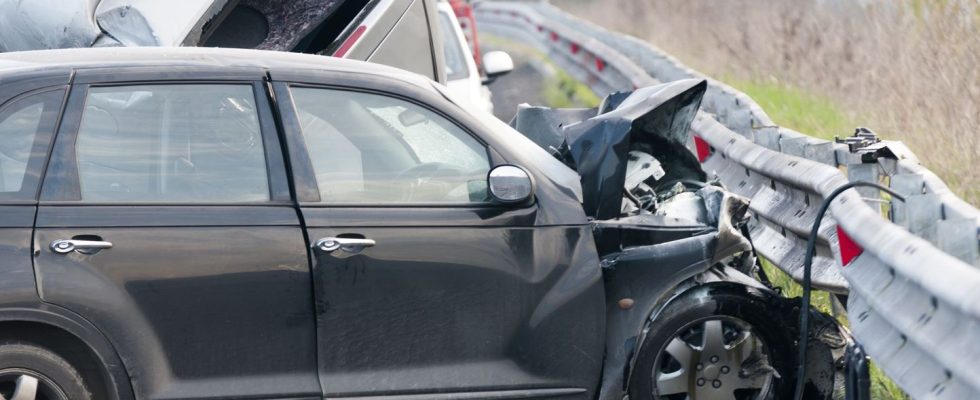Last month, the French were “particularly in mourning” on the roads. In March 2024, the number of road deaths increased by 31% compared to the same month last year. In total, 254 people lost their lives and 1,164 people were seriously injured, an increase of 10% compared to the previous year.
These tragic figures, revealed by the National Interministerial Road Safety Observatory (ONISR) Monday, question. Who are the main victims? Why such an increase in March? What to do to reduce numbers? 20 minutes looks into the issue for you, even though such mortality has not been recorded on our roads since 2019.
Who are the main victims?
Since the pandemic, motorists represent almost half of road deaths. In March, they were particularly hard hit when 120 of them lost their lives, an increase of 29%. However, ONISR also notes an increase in the number of deaths on motorized two-wheelers (nine more than last year) and on bicycles (five more). Unfortunately, young people aged 18 to 24 are still particularly affected. Their road mortality is on the rise again and, in March 2024, 23 more young people were killed on the road. “Young people are twice as exposed to risk as all drivers. The road remains the leading cause of death for them,” recalls Pierre Lagache, vice-president of the League against road violence. For decades, young people have been killed behind the wheel.
“Young people lack emotional maturity when faced with a risky situation,” underlines Régis Chomel de Jarnieu, president of the French association for the prevention of behavior on the road (APFC). The driving school instructor is concerned to see the implementation of the license at 17 years old, effective since January 2024, while he observes many young people succeeding despite “total emotional fragility”. “This system, which is just being put in place, does not explain these figures,” believes Pierre Lagache. But this is obviously not a good measure when young people are less aware of the risks than the rest of the population. »
Why such an increase in March?
If road mortality had fallen slightly in 2023, it is increasing at the start of the year. In January, the number of deaths was up 6% and in February 3%. “We have observed an increase since last September,” regrets the vice-president of the League against road violence. ONISR, however, assures that over one year, the number of deaths has fallen by 16%. The figures for March 2023 were also “particularly low” with a decline of 14% compared to the previous year, notes the Observatory.
It is difficult to establish with precision the reasons for such an increase, especially over a month, while ONISR assures that these figures are rapid feedback from the police which do not include, for the moment, any details on the causes and factors of these accidents. For Régis Chomel de Jarnieu, the screens bear their share of responsibility. “These young people have been in the back of the car in front of a screen since their childhood. They no longer learn the road by looking at their parents as previous generations did and they are so used to observing a screen very closely that they have increasing difficulty in projecting themselves visually,” a skill that nevertheless essential while driving.
Our file on road safety
For its part, the League against road violence accuses government policy. Between the license at 17 and the end of the withdrawal of points for minor speeding violations, the executive is “dismantling road safety in France”, accuses Pierre Lagache. “The French feel a relaxation of road safety and are in turn relaxing on the road. [Avant 2007], there was a tradition of amnesty for each presidential election. The fines from previous months were canceled and, systematically, there was an increase in mortality. This amnesty cost around 400 lives,” illustrates the vice-president of the League Against Road Violence, for whom the mechanism in use today is similar.
What can be done to reduce this figure?
These figures encourage better prevention, particularly outside urban areas where the increase is particularly strong (+17% over the last three months). “We have to work on the catapult syndrome, the fact of wanting to have arrived before having left. This phenomenon makes people impatient and, by dint of pulling on the elastic, they have an appointment with an accident,” says Régis Chomel de Jarnieu, who estimates that insurance premiums could be “5 to 10% cheaper for each person who, every three or five years, would agree to do a personalized driving assessment.” At least, “in a utopian world,” he slips.
For better prevention, the League against road violence recommends respecting the 2020 “Stockholm Declaration”, which aims to halve the number of road deaths by 2030. “The State must remobilize and develop a road map which is non-existent today. The government has used road safety as a bargaining chip with the electorate. But we pay the price,” accuses Pierre Lagache. A price which, in March, amounted to 254 lives.

